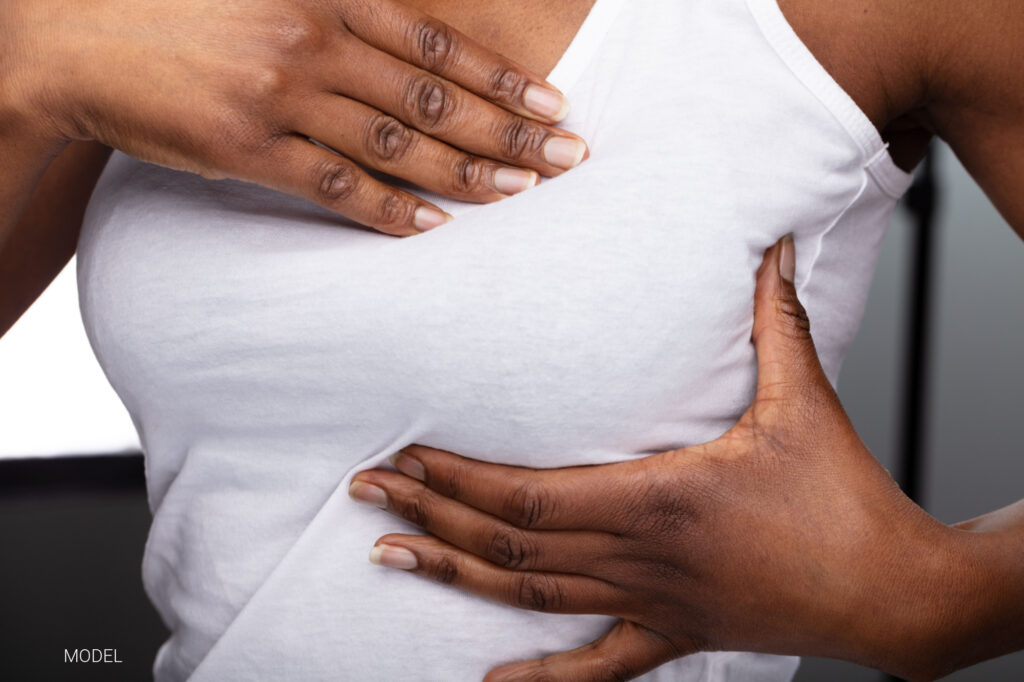3 Minute Read:
Breast reconstruction repairs breast defects from trauma or disease, such as cancer, and are meant to restore the breast to mimic as closely as possible its native breast. Only a portion or the entire breast, nipple and areola can be reconstructed. In the past the goal of breast reconstruction was to create a breast mound so that a woman could have the appearance of breast when dressed. Fast forward and now the goals are to have a soft and gently sloping breast that looks and feels like a natural breast.

Whether to undergo reconstruction or not is a personal decision and there are no right or wrong answers. Researching thoroughly will help you know what to expect and educate you on all your options. Breast reconstruction has become more popular due to increased awareness, laws that require insurance companies to cover reconstruction costs, resection techniques to preserve the nipple and areola, and advanced reconstruction techniques. Women choose reconstruction to make them feel whole, restore confidence, it gives them a sense of control during treatment, and it brings a sense of closure to the struggle of breast cancer diagnosis and treatment.
Reconstruction falls into two main categories: implant based or tissue flap reconstruction. Research has shown over and over that regardless of the type of reconstruction women are generally satisfied and have improved breast satisfaction, psychological and sexual well being.
Types of Breast Reconstruction
- Implant-Based Reconstruction:
- This technique involves the placement of breast implants to recreate the breast mound.
- Saline and silicone implants are the two primary options, each with its own advantages.
- Autologous Tissue Reconstruction:
- Also known as “tissue flap reconstruction,” this approach uses a woman’s own tissue from various donor sites (like the abdomen or buttocks) to rebuild the breast.
- It provides a natural feel and appearance and can potentially age more gracefully than implants.
- Combination Reconstruction:
- Some cases may require a combination of both implant and autologous tissue techniques to achieve the desired results.
Timing of Reconstruction
Breast reconstruction can be performed either immediately after mastectomy (immediate reconstruction) or as a separate procedure after the initial surgery (delayed reconstruction). The choice depends on individual circumstances and preferences, and I work closely with patients to determine the best course of action.
The Emotional Journey
Breast reconstruction goes beyond physical restoration; it touches the emotional and psychological aspects of a woman’s life. Many patients report feeling more confident, positive, and empowered after the procedure. As a plastic surgeon, I prioritize open communication and emotional support throughout this transformative journey.
Recovery and Aftercare
Recovery from breast reconstruction varies based on the chosen technique. Patients receive detailed post-operative instructions to ensure a smooth healing process. Follow-up appointments and ongoing care are essential to monitor progress and address any concerns.
Breast reconstruction is a profoundly impactful procedure that aims to recreate a natural-looking breast following mastectomy or breast-related trauma. It’s not just about restoring physical appearance; it’s also about helping women regain their self-esteem and confidence.
Final Thoughts
Breast reconstruction is a remarkable procedure that allows women to reclaim their sense of self after facing breast-related challenges. As a plastic surgeon, I am honored to be a part of this life-changing journey, providing not only physical restoration but also emotional support. If you or a loved one is considering breast reconstruction, don’t hesitate to reach out to schedule a consultation. Together, we can create a personalized plan to restore confidence and embrace the beauty of life.
Thank you for joining me on this informative exploration of breast reconstruction. Stay tuned for more insights and updates on plastic surgery topics in the future. Remember, your beauty and confidence are worth celebrating and preserving.
Disclaimer: This blog post is intended for informational purposes only and should not be considered medical advice. Consult with a qualified plastic surgeon for personalized recommendations and treatment options.
